Arab-Israeli conflict is a struggle between the Jewish state of Israel and the Arabs of the Middle East. About 90 percent of all Arabs are Muslims. The conflict has included several wars between Israel and certain Arab countries that have opposed Israel’s existence. Israel was formed in 1948. The conflict has also involved a struggle by Palestinian Arabs to establish their own country in some or all of the land occupied by Israel.
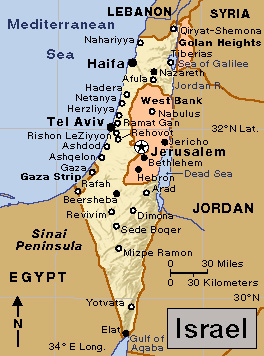
The Arab-Israeli conflict is the continuation of an Arab-Jewish struggle that began in the early 1900’s for control of Palestine. Palestine today consists of Israel and the areas known as the Gaza Strip and the West Bank. The Arab people known as the Palestinians lived in the region long before Jews began moving there in large numbers in the late 1800’s.
The Arab-Israeli conflict has been hard to resolve. In 1979, Egypt became the first Arab country to sign a peace treaty with Israel. Jordan, another Arab country, signed a peace treaty with Israel in 1994. But Israel has not made final peace agreements with Syria or with the Palestine Liberation Organization (PLO). The PLO is a political body that represents the Palestinian people.
Historical background.
In the mid-1800’s, Jewish intellectuals in Europe began to support the idea that Jews should settle in Palestine, which the Bible describes as the Jews’ ancient homeland. The word Palestine does not appear in the Bible. But it has long been used to refer to the area the Bible describes. The idea that Jews should settle in Palestine became known as Zionism. In the 1800’s, Palestine was controlled by the Ottoman Empire, which was centered in present-day Turkey.

Zionism became an important political movement among Jews in Europe because of increasing anti-Semitism (prejudice against Jews) there (see Anti-Semitism). The anti-Semitism resulted in violent attacks on Jews and their property. In the 1800’s, the immigration of European Jews to Palestine accelerated. At first, many of the immigrants and the Palestinians lived together peacefully. But as more Jews arrived, conflicts between the two groups increased.
In 1917 and 1918, at the end of World War I, the United Kingdom gained control of Palestine from the Ottoman Empire. In the Balfour Declaration of 1917, the United Kingdom had supported creating a national homeland for the Jews. Under British rule, the Jewish population of Palestine continued to grow.
During World War II (1939-1945), German dictator Adolf Hitler tried to kill all of Europe’s Jews. Thus, about 6 million Jews were murdered. After the war, most of the countries that defeated Germany supported the idea of creating a new Jewish state where Jews would be safe from persecution. See Balfour Declaration.
The 1948 war.
In November 1947, the United Nations (UN) approved a plan to divide Palestine into two states, one Jewish and the other Palestinian. Zionist leaders accepted the plan. But Arab governments and the Palestinians saw the division as the theft of Arab land by Zionists and the governments that supported them.
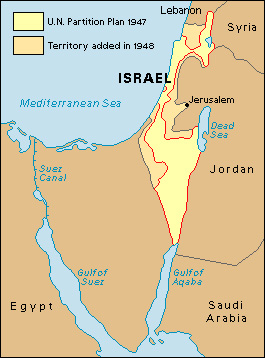
British rule over Palestine ended when Zionists proclaimed the state of Israel on May 14, 1948. The next day, armies of Egypt, Syria, Lebanon, Transjordan (which became known as Jordan in 1949), and Iraq attacked Israel. Israel fought back. In the war, Israel absorbed much of the land the UN had set aside for the Palestinians. Egypt and Jordan occupied the rest of the area that was assigned to the Palestinians. Egypt held the Gaza Strip, a small area between Israel and the Mediterranean Sea. Jordan held the West Bank, a territory between Israel and the Jordan River. By August 1949, Israel and all five Arab states had agreed to end the fighting. Because of the war, more than 700,000 Palestinians became refugees. Most fled to Jordan—including the West Bank—or to the Gaza Strip. Others went to Lebanon and Syria.
The Suez crisis of 1956.
During the 1950’s, nationalism spread among the Arab countries of the Middle East. Egyptian President Gamal Abdel Nasser and his followers sought to rid Arab lands of the influence of Western nations (see Nasser, Gamal Abdel). On July 26, 1956, Nasser took control of the Suez Canal from its British and French owners. The canal connects the Mediterranean and Red seas and is a key shipping route between Europe and Asia.

Many countries protested Nasser’s action. The United Kingdom, France, and Israel secretly plotted to end Egypt’s control of the canal. On October 29, Israel attacked Egyptian forces in Egypt’s Sinai Peninsula and quickly defeated them. The Sinai lies between Israel and the canal. Israel, with British and French help, occupied most of the peninsula. The UN called a cease-fire on November 6 By early 1957, Israel, under international pressure, returned the Sinai to Egypt. The canal reopened under Egyptian management in April of that year. See Suez crisis.
After the Suez crisis, Arab guerrillas launched small-scale attacks inside Israel, and Israel responded with raids into Arab territory. At the same time, the Arab nationalist movement began receiving financial and military support from the Soviet Union. The United States, fearing the spread of Soviet-sponsored Communism, gave financial and military aid to Israel.
In 1964, the PLO was formed to represent the Palestinians. It included guerrilla groups dedicated to defeating Israel and creating an independent Palestinian state. See Palestine Liberation Organization (PLO).
The 1967 war.
In May 1967, Nasser closed the Gulf of Aqaba to Israeli shipping. The gulf was Israel’s only access to the Red Sea. By June 5, Egypt had signed defense agreements with Syria, Jordan, and Iraq, creating a joint military command.
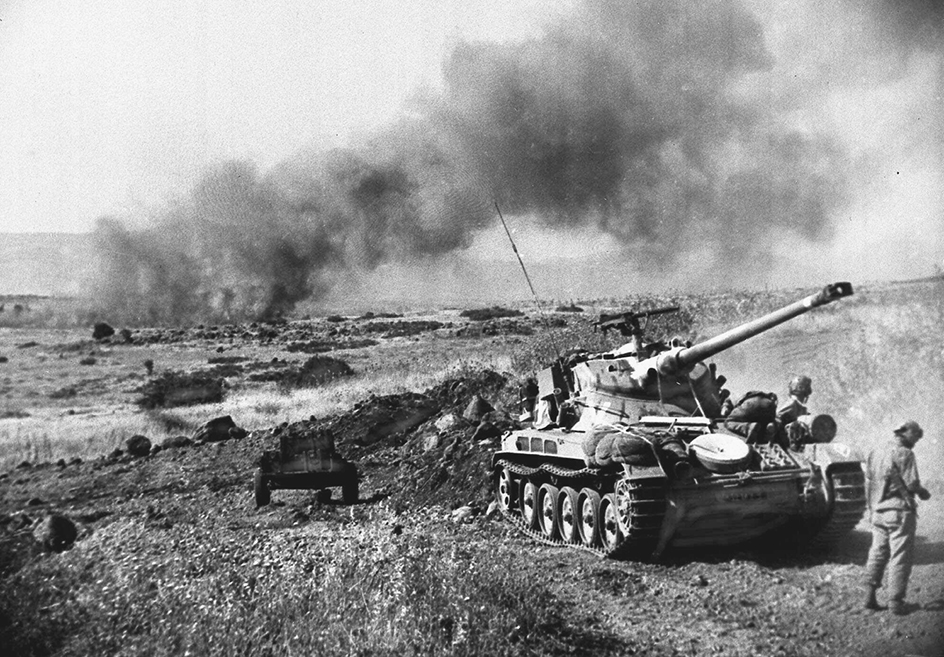
These apparent preparations for war alarmed the Israelis. On June 5, they launched a surprise attack on Egypt. Syria, Jordan, and Iraq joined Egypt in fighting Israel. Within hours, Israeli warplanes destroyed almost all the Arab air forces. Israeli tanks then retook the Sinai Peninsula. Israel also gained control of the West Bank, the Gaza Strip, and East Jerusalem. It had taken West Jerusalem in the 1948 war. In the north, Israel took Syria’s Golan Heights, an area bordering Israel. The fighting ended on June 10. Israelis call this conflict the Six-Day War. Arabs call it the June War. After the war, Israel decided it would return the territories it had taken only if the Arab countries recognized its right to exist.
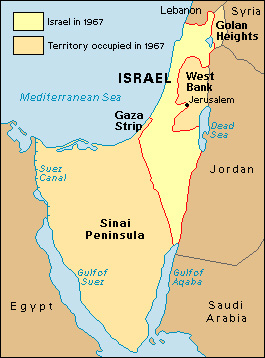
Also after the 1967 war, the PLO sought to become the representative of the Palestinians in world politics. It developed educational and social service organizations for Palestinians, mainly in the West Bank and Gaza Strip and in refugee camps in Lebanon and Jordan.
The PLO also began to take independent military action. In the late 1960’s, PLO groups began to attack Israelis both inside and outside Israel. In response, Israel attacked Palestinian refugee camps in Jordan and Lebanon, in which many guerrillas were based. The Israelis also assassinated a number of PLO leaders.
The 1973 war.
After the 1967 war, Egyptian and Israeli troops continued to attack each other across the western border of the Sinai Peninsula. On Oct. 6, 1973, Egypt and Syria launched a massive assault on Israeli forces in the Sinai Peninsula and Golan Heights. The attack took Israel by surprise, in part because it came on Yom Kippur, the holiest day in Judaism. See Egypt (Renewed warfare and peace).
At first, Egypt drove Israel’s forces out of the western Sinai, and Syria pushed Israeli troops from the eastern Golan Heights. However, the United States gave Israel large amounts of military equipment. By October 24, Israeli forces crossed the Suez Canal and surrounded the Egyptian army. They also defeated the Syrian army in the Golan Heights. Israelis call this war the Yom Kippur War. Arabs call it the October War or the Ramadan War.
The Camp David Accords.
In 1978, Egyptian President Anwar el-Sadat joined Israeli Prime Minister Menachem Begin and U.S. President Jimmy Carter in signing the Camp David Accords. Under these agreements, Egypt recognized Israel’s right to exist. In return, Israel agreed to give back to Egypt the part of the Sinai it still occupied. Israel had returned the far western part of the Sinai in 1975. Sadat and Begin also agreed there was a need for national independence for the Palestinians. In talks leading up to the accords, Egypt and Israel received promises of large amounts of U.S. economic and military aid. In 1979, Egypt and Israel signed a treaty that confirmed their new peaceful relationship.

Most Arab leaders strongly opposed the Camp David Accords and the 1979 treaty. As a result, Egypt was expelled from the Arab League, an organization of Arab countries, in 1979. In 1981, Sadat was assassinated by an Egyptian religious group that opposed his policies.
The Israeli invasion of Lebanon.
After the signing of the Camp David Accords, the PLO continued to launch guerrilla attacks on Israel, especially from southern Lebanon. In 1982, Israel invaded Lebanon and drove the PLO out of the southern part of the country. Israeli forces remained in southern Lebanon until 2000. See Lebanon (War and terrorism) (Political struggle).
The first intifada.
In 1987, Palestinians in the West Bank and Gaza Strip began an uprising against Israel’s military rule of those territories. During this intifada (an Arabic term meaning uprising or shaking off), demonstrations occurred throughout the occupied territories. Entire towns refused to pay taxes to Israel. Palestinians quit their jobs with Israeli employers. Most demonstrations were peaceful, but a few became violent. The intifada grabbed international attention and triggered criticism of Israel for its continuing control of the West Bank and Gaza Strip and for its extensive use of force in trying to control the Palestinians.
Peacemaking.
In 1988, the PLO recognized Israel’s right to exist. It also declared its readiness to negotiate with Israel for peace in return for the creation of an independent Palestinian state. In addition, it declared it would no longer use violence against Israel. But some PLO members continued to attack Israeli targets.
In 1991, the Soviet Union, long the main foreign supporter of anti-Israeli governments and the PLO, was dissolved. Thus, the Arabs found themselves with much less international support for their fight against Israel.
In 1993, Israel and the PLO, aided by Norway, began secret peace talks. As a result, the PLO and Israel signed an agreement in Washington, D.C., in September 1993. Under the agreement, the PLO again stated its recognition of Israel’s right to exist. Israel, in turn, recognized the PLO as the representative of the Palestinian people. It also promised to withdraw from part or all of the West Bank and Gaza Strip and to consider allowing the creation of a Palestinian state in those lands. In 1994, as a first step, Israel gave the PLO control of the Gaza Strip and the West Bank city of Jericho. In 1995 and 1996, Israel gave the Palestinians control of most cities and towns of the West Bank. See Oslo accords.
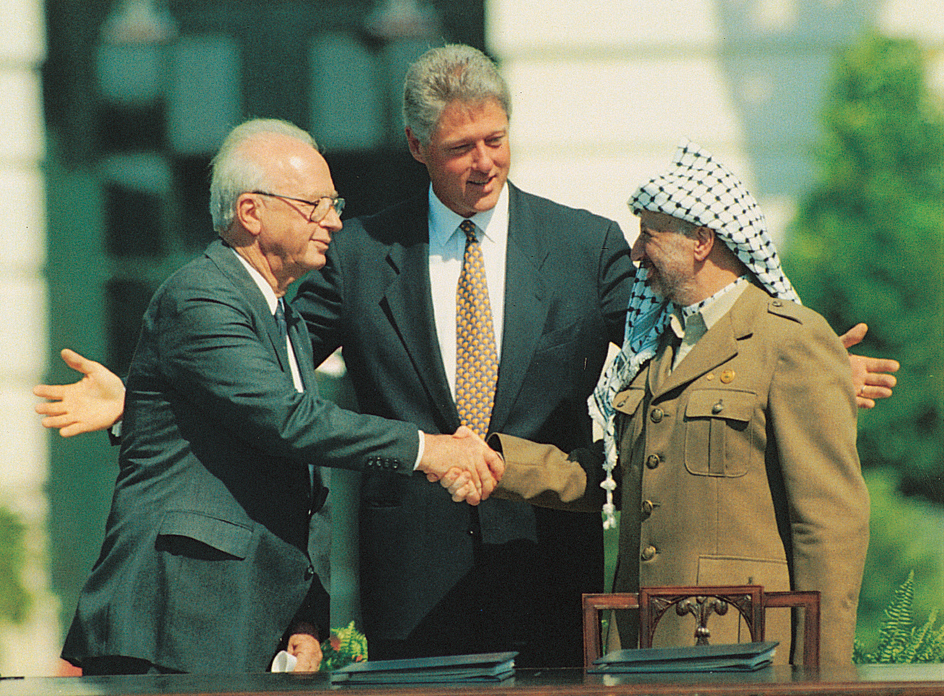
Jordan signed a peace treaty with Israel in 1994. Israel then continued to seek a peace treaty with Syria. Syrian-Israeli peace discussions, however, broke down in 1996. Talks resumed in December 1999 but stopped the next month because of continuing disagreement over the Golan Heights.
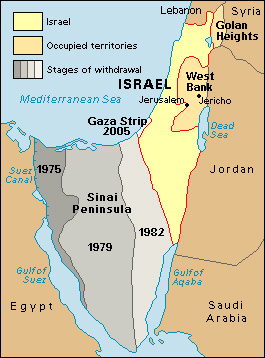
In October 1998, Israel and the Palestinians signed another agreement. Under the accord, Israel turned over more land in the West Bank to Palestinian control. See Wye River Memorandum.
The second intifada.
Peace talks between Israeli and Palestinian leaders continued in 2000. However, the two sides were unable to agree on key remaining issues, especially those involving the final status of Jerusalem. In September 2000, Palestinians began a second intifada against Israeli security forces. Numerous attacks by Palestinian militias and suicide bombers took place throughout Israel, the West Bank, and the Gaza Strip, killing hundreds of Israelis. Israeli forces repeatedly bombed and invaded the West Bank and Gaza Strip, killing thousands of Palestinians and demolishing hundreds of houses. In 2002, Israel reoccupied most West Bank cities. That same year, Israel began constructing a barrier that was designed to separate most of the West Bank from Israel. In 2003, diplomats from the United States, Russia, the European Union, and the United Nations proposed a peace plan known as the “roadmap.” Israeli and Palestinian leaders resumed negotiations under this plan, but the negotiations soon broke down. Palestinian attacks and Israeli military strikes continued. In early 2005, Israeli Prime Minister Ariel Sharon and Palestinian leader Mahmoud Abbas met in Egypt and declared an Israeli-Palestinian truce. However, some violence continued between the two sides.
Conflict continues.
In 2004, Sharon announced a plan to remove all Jewish settlements and Israeli troops from the Gaza Strip by the end of 2005. On Aug. 15, 2005, the Israeli government began the evacuation of all Jewish settlers from the Gaza Strip and four West Bank settlements. Many settlers protested the evacuation, and Israeli troops forcibly removed them. The settler evacuation was completed on August 23. The last Israeli troops evacuated on September 20. About 120 Jewish settlements remained in the West Bank.
In June 2006, Palestinian militant groups captured an Israeli soldier. The groups demanded Israel release Palestinian prisoners in exchange for the soldier. Fighting between the two sides increased. Israel bombed parts of the Gaza Strip, and militants fired rockets into Israel. Israeli troops entered the Gaza Strip, and fighting there killed over 300 people. In November, both sides agreed to a cease-fire.
In July 2006, Hezbollah, a radical Islamic group in Lebanon, captured two Israeli soldiers near the border of Lebanon and Israel. In response, Israel began bombing Lebanon. Israel blamed the Lebanese government for not disarming Hezbollah. Hezbollah fired missiles into northern Israel. In August, Israel and Lebanon accepted a cease-fire agreement drafted by the UN Security Council. The conflict caused over 1,000 Lebanese and Israeli deaths.
In December 2008, Israel launched air attacks on targets in the Gaza Strip. Israel stated that the air strikes were in response to rocket attacks from Hamas militants. In January 2009, Israel began sending troops into the Gaza Strip. The fighting caused more than 1,300 deaths, almost all of them Palestinians, and wounded thousands more. On January 17, Israel declared a cease-fire. Hamas declared a cease-fire the next day, though some fighting continued.

In November 2012, violence in Gaza erupted again as Hamas rocket attacks met with Israeli naval and air strikes. In roughly one week, about 170 people were killed, all but 6 of them Palestinian. In July 2014, Israeli soldiers again entered Gaza after a sharp increase in cross-border violence. Over the next several weeks, more than 2,000 Palestinians were killed, as were dozens of Israelis.
In October 2015, violence again flared up in the occupied Palestinian territories, resulting in the deaths of dozens of people, most of them Palestinian. In 2018, Israeli security forces killed more than 120 Palestinians during large protests along the Gaza Strip’s border with Israel.
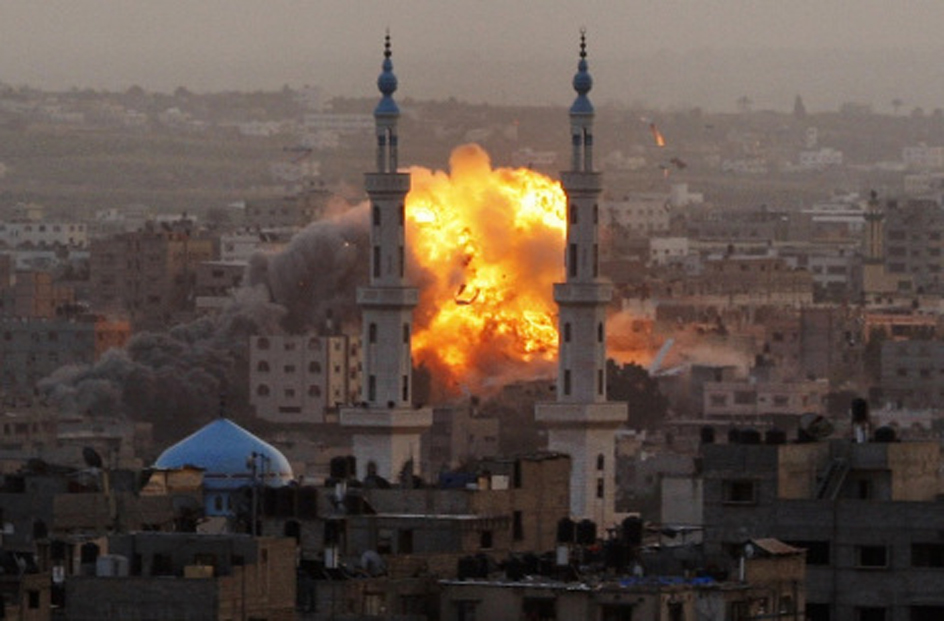
New peace plan.
After Donald J. Trump became president in 2017, the United States officially recognized Jerusalem as Israel’s capital. The U.S. Embassy moved from Tel Aviv to Jerusalem in 2018. The move sparked protests in Gaza, where Israeli security forces killed 62 Palestinians and injured about 2,700 others.
In early 2020, the Trump administration announced a proposed Middle East peace plan. The plan acknowledged the right of Palestinians to form an independent state. However, it allowed Israel to annex 30 percent of the West Bank, including all of the Israeli settlements there. The Palestinians would receive some territory near Gaza in exchange. The plan proposed a unified Jerusalem as Israel’s capital and the establishment of a Palestinian capital northeast of the city. Israel supported the plan and agreed to freeze for four years its expansion of West Bank settlements. By the 2010’s, Israelis had established about 130 government-approved settlements and dozens of additional outposts in the West Bank. The Palestinians, who had no role in drafting the plan, rejected it.
In August 2020, the United Arab Emirates (UAE) and Israel entered into an agreement to establish official diplomatic ties between the two countries. Among Arab nations, only Egypt and Jordan had established such relations with Israel. The deal also required Israel to suspend annexation of settlements in the West Bank. In September, representatives of the UAE, Israel, and Bahrain met in Washington, D.C., and signed the Abraham Accords. With the agreements, the UAE and Bahrain formally recognized the Jewish state. The normalization agreements also set up an avenue for further diplomatic relations. In December, Morocco agreed to normalize relations with Israel. In January 2021, Sudan also signed the accords.
Conflict resumes.
Some of the worst violence in the region since 2014 broke out between Israel and Palestinians in May 2021. Violence erupted as the result of Israeli police actions in East Jerusalem. Hamas responded by launching air strikes into Israel, and Israel fired air strikes into Gaza in return. More than 260 people—the majority of them Palestinians—were killed, and hundreds more were injured. Hundreds of buildings in Gaza were destroyed, and tens of thousands of Palestinians were displaced. On May 20, Hamas and Israel agreed to a cease-fire. 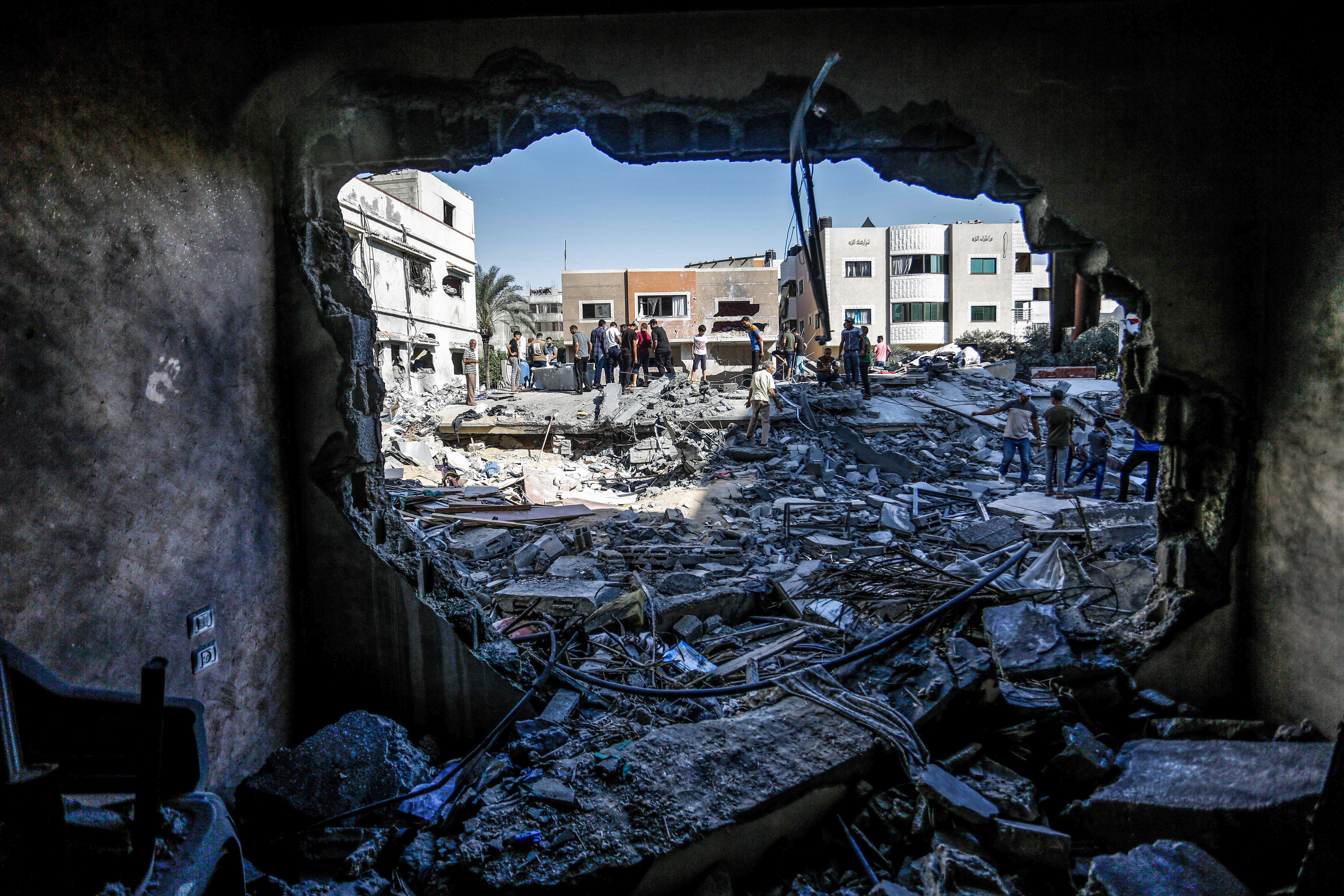
In October 2023, Hamas launched a large-scale surprise attack against Israel from the Gaza Strip. The group not only fired rockets into Israel, but also broke through a barrier around Gaza and invaded Israel by land, killing about 1,200 people and taking more than 200 hostages. In response, Israel declared war for the first time since the Yom Kippur War in 1973. The country launched counterattacks against the invading Hamas militants and against many targets in Gaza. Thousands of people died in the conflict and thousands more were wounded, including many civilians on both sides.
